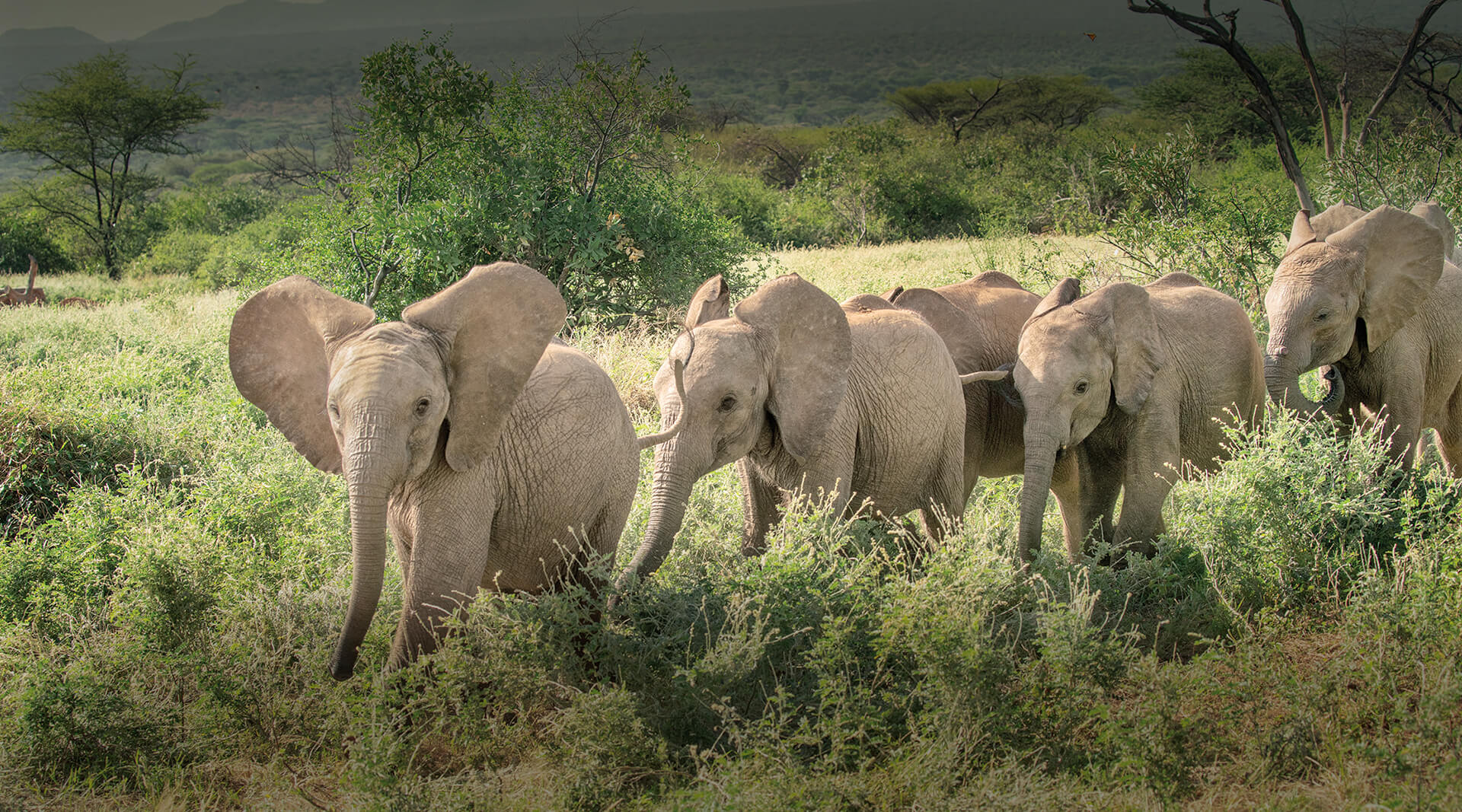African Elephants: Heartbeat of the Savanna
IUCN Conservation Status: Endangered
An elephant never forgets: they remember individuals, where and how to find food, water, and shelter, and even appear to recall impactful life events. We at San Diego Zoo Wildlife Alliance can never forget the extraordinary conservation efforts made by our scientists and innovative partners around the world to save this species from the poaching and habitat degradation that threatens its population in the African savanna.
African elephants are extremely social. They live in matriarchal herds, working together to raise their young, find food, and protect each other. With long pregnancies (lasting up to 22 months) and calves that nurse for their first few years of life, populations of these magnificent icons are slow to increase.
Over the last century, the African elephant has faced an array of challenges. Habitat degradation and fragmentation, ivory poaching fueled by an illegal wildlife trade, and climate change-driven drought all threaten elephants, the largest land animals on earth.
Making an Impact, at Home and in Africa
For decades, conserving African elephants has been a high priority for San Diego Zoo Wildlife Alliance. Scientific studies conducted in the field and with our elephant herds at the San Diego Zoo and Safari Park give us a unique opportunity to increase our understanding of the species and to help develop conservation solutions that we can apply in the field with our partners.
For example, as human populations expand, they create added pressures on the home ranges of these majestic animals. This can challenge an elephant’s movement patterns and social behaviors. In northern Kenya, we work with Northern Rangelands Trust and The Nature Conservancy to preserve large tracts of land, where we are helping local ecologists and rangers study ways to promote human-elephant coexistence. “Careful consideration of the ways in which social relationships shape how wildlife use landscapes is an important tool for conservation,” says Shifra Goldenberg, Ph.D., scientist with San Diego Zoo Wildlife Alliance.
San Diego Zoo Wildlife Alliance also partners with Save the Elephants to monitor the ranging patterns, social behavior, and health of orphaned elephant calves. Through the use of GPS technology, trail cameras, and behavioral observations, wildlife specialists are learning what rehabilitated elephants need to thrive in the wild. Ongoing studies led by Save the Elephants and Colorado State University guide our research in these areas, particularly the insights about orphan elephant behavior and their physiology.
A First-of-its-kind Collaboration
Poaching and climate change-driven droughts have resulted in an increasing number of young orphaned elephants. In a first-of-its-kind partnership, we work closely with the Reteti Elephant Sanctuary, a unique, community-led endeavor in northern Kenya that rescues, rehabilitates, and reintroduces orphaned elephants to the savanna. Until recently, the Reteti veterinary team did not have the necessary equipment and experience to perform routine diagnostic tests on site. We helped to fund and equip a veterinary lab, and train veterinary staff, so experts at Reteti can now analyze biological samples from the orphans to immediately help treat and nurse them back to health faster.
And as part of an elephant movement study, our researchers were able to measure the Safari Park herd’s step count and activity, as well as gather data on their auditory communication and behavior. Together, this helps us and our partners develop a clearer understanding of the social dynamics of a herd, and the important social relationship between a mother and her calf.
Increasing our knowledge of the complexity of elephant social behaviors, and our understanding of their overall health needs a half a world away, has given San Diego Zoo Wildlife Alliance and our conservation partners valuable insight into what successful conservation outcomes look like for elephants. “Working together, our partners share their knowledge of elephants with us, and we are sharing what we learn about these magnificent, gentle giants with our partners,” says Nadine Lamberski, DVM, Chief Conservation and Wildlife Health Officer of San Diego Zoo Wildlife Alliance. “We are working toward the ultimate goal of a world where all life thrives.”

